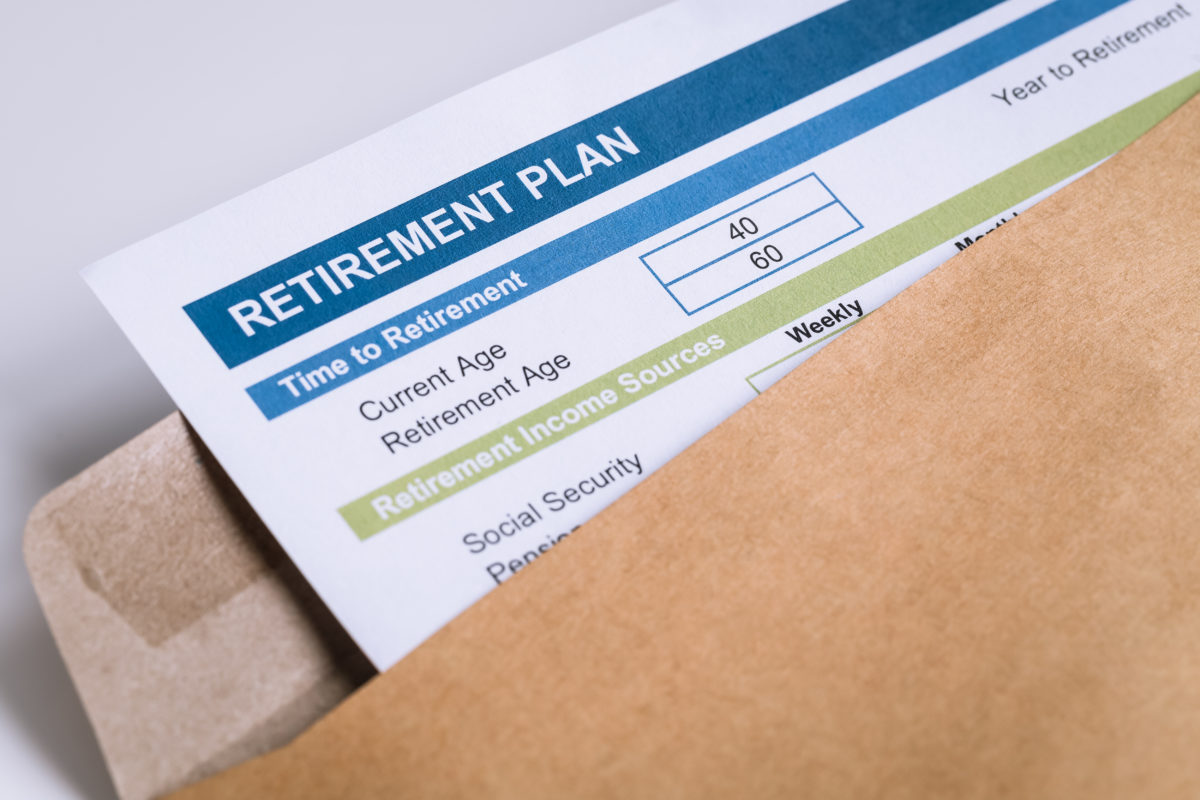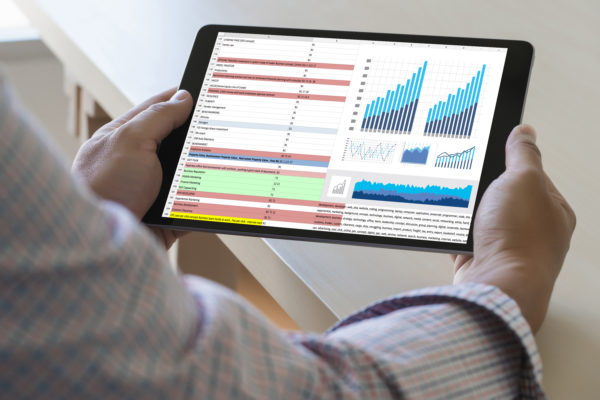How Do You Create a Retirement Plan?
by Gabriel Lewit

Thinking about creating a retirement plan? That’s an excellent idea. But wait… how do you do that? I mean, what’s really in a retirement plan, anyways? And, how do you even get started?
At SGL Financial, we’re retirement planning experts. Building rock-solid retirement plans is what we do—all day, every day!
In today’s article, let’s take a look at the steps that are required to successfully design a retirement plan that lasts throughout your retirement years. We’ll provide you with insight and tips gleaned from the development of literally thousands of individually personalized plans.
Let’s dive in.
Step #1 – Get Organized

Like any project you may think to undertake, such as painting your house or cleaning out your garage, your very first step is to get organized. Taking the time up-front to get organized means that you’ll be far more efficient and effective throughout the remainder of your retirement planning project.
So what do you need to do to get organized?
- Download current statements of all your financial accounts, investments, 401(k)s, life insurance policies, checking account, savings, etc.
- Prepare a current budget of monthly expenses
- Take inventory of all current sources of income and/or bonuses
- Dust off your tax returns, W2s, pay-stubs, health insurance plan, and other key documents
- Discuss with yourself (and/or spouse), when you think you want to retire
- Determine if you want to work part-time after you retire
- Assess your current health and project what your future healthcare expenses may be
- Take stock of any large expected purchases or future expenses (new car, college, or other)
- Make note of any anticipated sums of money or inheritances
- Write down any retirement goals that you have for yourself (travel, moving, fun money, and anything else on your list!)
- Find any previous financial plans or projections you may have prepared
- Schedule the appropriate amount of time to be able to accomplish this project
This is just a starting list of the most critical items. Chances are, in the preliminary planning phases, you may encounter more information that you need to track down. But, with the details above, you’ll have 99% of what you need to start creating your retirement plan.
Step #2 – Go it Alone or Find an Advisor?

Your next step is a very important one, and it will determine how you proceed from here. You must decide if you want to go it alone or work with a professional financial advisor or financial planner, like SGL Financial. Here are some quick tips depending on what you decide you want to do:
If Going it Alone:
- Make sure you feel confident in your financial planning skill set
- Attend some retirement planning workshops or courses to gain further knowledge
- Don’t overestimate your finances or get overconfident in yourself
- Block out enough time to thoroughly analyze each aspect of your plan
- Use the right financial planning software (see below for more information)
If Choosing a Financial Planner or Advisor:
- Work with an advisor who is a Fiduciary
- Choose an advisor who is holistic (provides both market investments and insurance)
- Take the time to get to know the advisor and experience their planning approach
- Write down any questions you have and ensure they are answered
- Be sure to discuss fees and any other expenses
- Make sure you work with someone who creates a PLAN, before they invest your money
- Work with a Retirement Planning Specialist (very different than a Stock Broker or Investment Advisor)
Bottom-line, going it alone isn’t necessarily bad for you… if you are confident in what you’re doing. But just like most people shouldn’t re-wire their own electricity due to risk of getting *zapped,* most people really shouldn’t attempt to create their own retirement plan. It’s very complex and you need to ensure that you’ve got it right.
We strongly encourage you to work with a professional planner—whether it’s SGL Financial or another firm—that you ultimately feel comfortable and trust. A good financial planner can be worth the price of their fees, time and time again, by providing practical guidance, discipline, tax-efficiency, expertise, and solid investment returns.
Step #3 – Use the Right Retirement Planning Software

When you create your retirement plan, you’ve got to use the right retirement planning software. Sure, you can Google “retirement calculator” and get a dozen ultra-basic planning calculators. However, more often than not, these provide you with very incorrect data and misleading results. There’s simply too much to input into your retirement plan, and most of the calculators available online omit 80% of this data!
With professional financial planners, you’ll ensure that you’re getting retirement planning software that includes all the variables that you need to consider, including:
- Inflation projections
- Tax rate projections
- Portfolio assumptions (on an account by account level)
- Income sequencing for withdrawals
- Stress-testing (more on this later)
- Medical costs (Health Insurance, Medicare, LTC and more)
- Survivorship scenarios (what if one spouse passes away early)
- Social Security timing options
- Income distribution optimization
- RMD (Required Minimum Distribution) management
- And much more
Unfortunately, very few options exist to create your own financial plan that include all of the above features. Moreover, if you do find a software to do this, it may be very complex to use correctly if you’re not familiar with it!
It’s interesting. Our firm has been creating financial plans for nearly 30 years, and in that time, we can count on one hand the number of clients that come to us with a retirement plan that includes all of the considerations above. Most plans that we see, which clients think are complete, end of being woefully inadequate in a number of aspects—causing the plan to produce highly unreliable results.
That’s not a good thing when you’re planning your one-shot at retirement!
Step #4 – Run Your Retirement Projections

All right… let’s recap where we’re at. You’re organized and have all the information you need on hand. You’ve decided to work by yourself (or maybe with an advisor). You’ve got a comprehensive retirement planning software ready to go. What’s next?
Actually doing it!
For many people, especially going alone, carving out the time in your busy life to perform this kind of retirement analysis is hard to do. In fact, most clients we work with barely have the time to create their budget and download their statements, let alone go through the effort of mapping out an entire retirement plan.
One of the advantages of working with a planner is that you have an additional layer of accountability. At SGL Financial, for example, we’ll let you know up-front that the planning process often takes 3 – 4 meetings, and each meeting is one-hour long. We’ll ask you if you’re ready to commit to that process in full, up-front, before diving in. For many, having those sessions “blocked-out” with an advisor can boost their ability and willingness to stick with it.
While some people will inevitably procrastinate, those that are serious about improving their retirement pictures by creating a plan will always find the time to carve out and focus on getting this done.
Step #5 – Stress Test Your Retirement Plan

Once your baseline plan is created, including all of the variables we discussed above, the last thing you want to do is what’s called “Stress-Testing.” Stress-testing means changing the assumptions in your plan to effectively test their worst case scenarios.
For example, here are some typical stress-tests we will run at SGL Financial:
- What if inflation rises to 3.50% instead of 2.00%?
- What if taxes increase to an Effective Marginal Rate of 20 – 25%, instead of 10 – 15%?
- What if you lose your job earlier than expected?
- What if you lose 30%, 40%, or even 50% in the market while taking income distributions?
- What if Social Security doesn’t get any Cost of Living Adjustments (COLAs)?
- What if my spouse passes away unexpectedly?
- What if market returns for the next 10 – 20 years are lower than they’ve historically been?
- What if I live to age 90, 95, or 100? Will my money last?
The goal with stress-testing is simple. If your plan works in these stress-tested scenarios, this can give you greatly increased confidence that your plan will work under optimal conditions. On the other hand, if one (or more) of these stress-testing triggers causes your plan to fail, you may want to make modifications to your income, expenses, savings, budget, etc. to ensure that your plan always works under all conditions and scenarios!
Conclusion
Creating a sound retirement plan is no easy task. It requires deep knowledge, experience, and skill. Whether you choose to go it alone, or work with an advisor—while ultimately up to you—is perhaps the most important decision you can make.
If you’d like to talk to SGL Financial about your retirement planning, give us a call at 847-499-3330 to schedule your complimentary financial review.
Or, click here to fill out our online contact form right now.
We’re a Fiduciary, we’re independent, and we’ve helped hundreds of retirees just like you to create a secure retirement plan and enjoy their golden retirement years.
